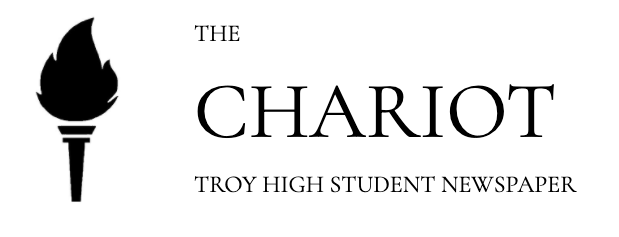The Troy School District Board of Education’s Collective Bargaining Agreement with the Troy Education Association was ratified early last year to be active from Feb. 1, 2024 to April 15, 2027. In the newly laid out 2024-2025 School Year Calendar for K-12 in Schedule F, two new “student holiday[s]” denoted as “SH” were added. The titular holidays are Diwali and Holi and both holidays are widely celebrated by Hindus and other South Asian religions, mainly in India.
Looking back to the previous Collective Bargaining Agreement from February 2021 to January 2024, this newly ratified contract is the first time these holidays have been acknowledged as “student holiday[s]” rather than “religious observance[s]” in which school would be held as normal.
Diwali is a student holiday for all three years of the contract except Nov. 8, 2026 as it occurs on a weekend, while Holi is a student holiday only in one; March 4, 2026 and March 22, 2027 are denoted as “O” for religious observance but school is still held on these dates.
Diwali follows the Lunar calendar, and it lands in autumn every year while Holi lands in the early spring. This year, Diwali occurred on Nov. 1, 2024 and Holi will occur on March 14, 2025, so students are exempt from school on these days to celebrate.
Holi, as explained by Junior Anandi Iyer, is the festival of “colors” in which the celebration is similar to a “water fight” with “colors being thrown” and often involving a “big group of people.” It is similar to Diwali in that it is considered a celebration of “good over evil.”
Diwali is thought of by Troy High School Junior Manasvi Mummaneni to be “one of the most popular traditions,” a celebration of “light over darkness” and of “hope over evil.”
Fellow Junior Vandana Rallabandi similarly likened the holiday as “the festival of lights.”
Mummaneni defines her personal observance of the holiday Diwali as “filling [her] house with a lot of brightness, love and celebration.” She expressed that Diwali being represented as “an important day throughout the Troy School District” made “[her] feel very happy.”
The day off gave Mummaneni a chance to “spend that day with [her] family at home” and “not have to worry about schoolwork,” allowing her to “let go of all worries” and fully immerse herself in the celebration.
Rallabandi agreed that “now that [the district] involve[s] Diwali and Holi,” her community can “all embrace [their] culture.”
Iyer also felt that she got to “appreciate [her family] more” with the freedom of a day off and unite with a “community of [her] own culture” for the holidays.
Kendra Montante, the Communications Director of the Troy School District, explained that the process for determining the school calendar and, in turn, the addition of these holidays, was done through “survey[ing] the community” in order to determine “what was most important.”
This survey included “religious observances” and reference to year by year variation in holiday dates since during “some years, different holidays fall at different times.”
For example, both Diwali and Holi follow the Lunar Cycle rather than the Gregorian calendar meaning that this year, according to the contract, the date of Nov. 1, 2024 is the day off for Diwali but in the 2025-2026 calendar, the date is instead Oct. 20, 2025.
Special conditions, such as early releases were reviewed as well. In the previous contract, early releases, where school is shortened by about an hour and 28 minutes, were commonplace but due to feedback from the survey, the district “work[ed] really hard to not have late starts or early releases” as parents would prefer either a “full day off or a half day” that would coincide better with work schedules and rides for the students.
Also considered was the fact that not all members of the staff reside in Troy so “consistency with other school districts” was a factor along with the “many hours of professional development” necessary for staff and state and national requirements like the duration of the school year. The aforementioned requirement is that there must be ”180 days in the calendar” which applies to all districts so any shift in the calendar must stay true to that, whether it is an earlier or later summer break/beginning of school year.
Montante confirmed that the new contract received “positive feedback from staff and the community” which makes sense because at Troy High School, there is a large prevalence of Indian and Indian-American students, shown by Troy High School’s chapter of the Indian American Student Association with many members, and, according to the US News and World Report, a “43.2% Asian” student body.
With this widespread presence, it follows that the Troy School District would acknowledge holidays that are important and beloved by the community. In the words of Mummaneni, the development is “very beautiful.”



